As unions awaken to renewed political clout, Sherrod Brown hopes to benefit

LAS VEGAS — On a recent Saturday afternoon, Democratic Sen. Sherrod Brown strayed from the same old circuit he has made for the last quarter-century — Ohio to Capitol Hill, Capitol Hill to Ohio — and instead flew west to Nevada. As far as anyone could recall, Brown had never campaigned in the Silver State before. Yet he knew exactly where he wanted to go first: the headquarters of Nevada’s powerful and politically influential Culinary Workers Union, Local 226, in the shadow of the Strip.
And he knew exactly what he wanted to say.
“If I run for president,” Brown vowed, “I will be the most pro-union candidate in this race — bar none.”
Brown, 66, has been pursuing (and winning) elected office his entire adult life. Shortly before graduating from Yale in 1974, he was recruited to run for Ohio’s state House — and won, taking office at the age of 23. Since then he has served as Ohio’s secretary of state and as a seven-term congressman representing Cleveland’s southwest suburbs. He was reelected to a third term in the Senate in 2018.
Now Brown is eyeing a loftier post. Last November, two years after Donald Trump routed Hillary Clinton in Ohio by 8 percentage points, Brown won his race by 7 — even as the rest of Ohio’s Democratic slate went down to defeat. Taking note of the senator’s singular success in an increasingly conservative state — as one of the Senate’s most liberal members, no less — pundits suddenly began to tout him as an underrated 2020 presidential prospect. That, in turn, inspired Brown and his wife, the Pulitzer Prize-winning columnist Connie Schultz, to start considering, for what they say was the first time, whether those pundits might actually have a point.
Hence the trip to Nevada, the next-to-last stop on a “listening tour” designed to introduce Brown to voters in the first four primary states — and to help him decide, one way or the other, on a run, which he says he intends to do by end of March. Hence too his Q&A with the Culinary Workers, and the pro-union promise he made them.

If Brown does, in fact, challenge Trump, he will do it in a very specific — and stubbornly old-fashioned — way. “There aren't enough people who call themselves Labor Democrats,” Brown told me in Las Vegas. “There's aren't enough Democrats who look at labor as the central organizing principle of our party. Without a strong labor movement, you end up losing on the big issues of the day.”
In other words, Brown would campaign nationally just like he’s always campaigned in Ohio: as a Labor Democrat himself. The goal, he says, would be to portray the president as a “phony populist” who won the White House by duping workers in Ohio, Pennsylvania, Michigan and Wisconsin — and to pitch himself to those same voters as the real deal.
In the Culinary Workers union hall, Brown and other speakers listed his labor bona fides, which always have a way of surfacing on the stump. His black New Balance sneakers, union-made in New England. His gray business suit, union-made in Brooklyn, Ohio. His and Schultz’s twin Jeep Cherokees, union-assembled in Toledo. His signature canary-in-a-coal-mine lapel pin, given to him by Ohio steelworkers at a Workers’ Memorial Day event in the late 1990s as a reminder that workers were “on their own” before they had “a union strong enough to protect them.”
“I would bring into the White House the presidents and CEOs of the biggest banks, in the biggest high-rise buildings, and I would say, ‘I don’t want to embarrass anybody, but what are you paying your contractors?’” Brown told the crowd as he stood in front of signs reading “One Job Should Be Enough.” “Not just your employees. What are you paying your food-service workers? What are you paying your custodians? What are you paying your security guards? Don’t you think you could pay all of them $15 an hour too?’”
As the applause subsided, Brown pointed to the dark-blue “Dignity of Work” signs his staff had printed and distributed for the occasion; the phrase, which originated with Martin Luther King Jr., has become Brown’s motto in recent years. “Whether you’re a bartender, whether you’re cutting hair in Reno, whether you’re a dealer, whether you prepare food, whether you work construction — no matter what you do, the ‘dignity of work’ means government for a change has to be on the side of workers,” he said. “I’ll always be the canary. I’ll always fight for workers.”

Brown’s message seemed to resonate. Afterward, I buttonholed D. Taylor, who led Local 226 from 1990 to 2002 and now serves as president of its parent union, Unite Here.
“If we’re just part of the checklist, Democrats will lose workers again,” Taylor told me. “But Sen. Brown is different. He’s actually embracing labor. His track record is there. He understands bread and butter issues. It’s like workers have become a sideshow. No — we’re it. Democrats have lost their way on that. Sen. Brown hasn’t.”
There’s little doubt Democrats have drifted away from labor over the last several decades. The question that could define Brown’s candidacy and determine his fate is whether the party, and the country, are starting to drift back.

Once upon a time, a Democrat wouldn’t have needed to describe himself as “pro-union.” The terms were basically synonymous. Two years into his presidency, Franklin D. Roosevelt said it was “a fundamental individual right of a worker to associate himself with other workers and to bargain collectively with his employer.”
“The Democratic Party represents the people,” Harry Truman added in 1948. “It is pledged to work for labor.”
In the 1970s, however, something changed. After Vice President Hubert Humphrey lost to Republican Richard Nixon in 1968, Democrats formed the Commission on Party Structure and Delegate Selection. Its goal was to heal and restructure the party — and restructure the party it did, slashing the influence of unions under the guidance of strategist Fred Dutton.
“Dutton sought to eject [from the Democratic Party] the white working class … which he saw as ‘a major redoubt of traditional Americanism and of the anti-Negro, anti-youth vote,’ the Atlantic’s Matt Stoller has written. “The future, he argued, lay in a coalition of African-Americans, feminists and affluent, young, college-educated whites.”
Dutton’s realignment succeeded. At the time, it felt like a natural evolution. The social safety net had been built. The unions had grown strong. The Great Depression was a distant memory. And so while “the blue-collar group was in the forefront” in “the 1930s,” Dutton wrote, “now it is the white-collar sector” taking the lead.
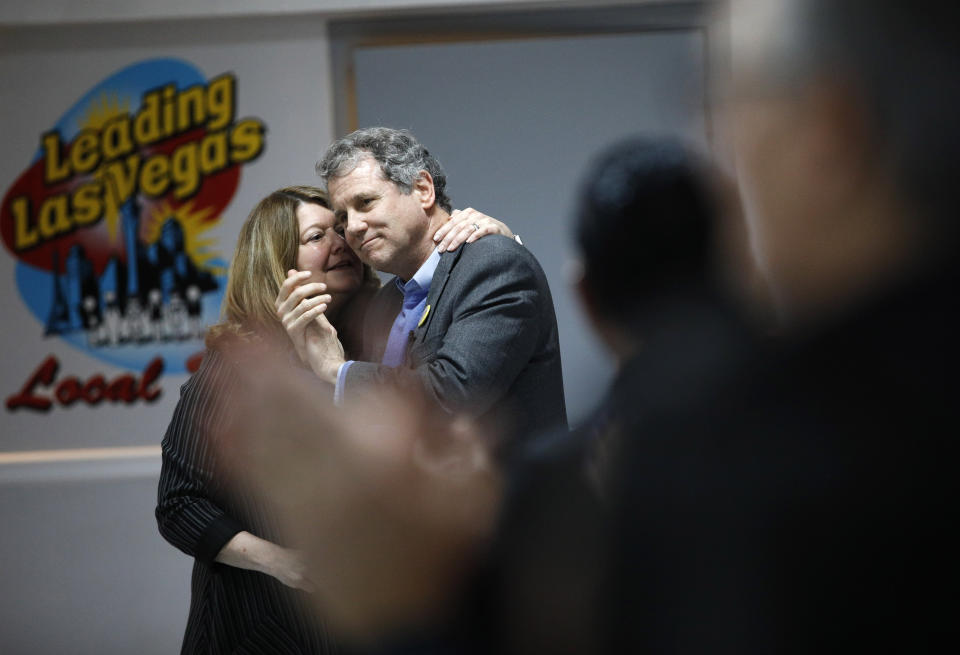
In response, a post-New Deal generation of politicians — Gary Hart and Bill Clinton, the neo-liberals and New Democrats — started to steer the party toward a more moderate, market-friendly agenda meant to appeal to the college-educated, baby-boomer professionals who now constituted its primary class constituency (and donor base). Free trade. Financial deregulation. Welfare reform. Public-private partnerships. Technocratic “innovation.”
Meanwhile, as Dutton & Co. were weakening labor’s sway over the Democratic Party, other forces — globalization, Reagan Republicans, the rise of shareholder value — were undermining its foothold in the workplace. As a result, the union membership rate in the United States fell by more than half between 1978 and 2017, from 26 to 10.7 percent.
Diminished and underdefended, unions have nonetheless remained loyal to Democrats; in fact, labor spent more on the 2016 election — nearly $170 million — than ever before. But the result has been that Democrats increasingly take labor for granted. Unions have nowhere else to go, they conclude. We can rely on their money and muscle regardless of which policies we prioritize.
Brown has long stood out as one of the few Democrats who refused to learn that lesson. The son of a physician father from Mansfield, Ohio, and a social-activist mother from Mansfield, Ga., he never worked in a factory himself; instead he went straight into politics after studying Russian at Yale. But Brown was raised, he says, with a “sense of justice” — his mom crusaded for civil rights; his father never forced patients to pay more than they could afford — and so, as a young state representative in the mid-1970s, he would spend his Fridays at the local union halls, Steel 169 and UAW 549.

“I’d hang around for two or three hours in the morning or afternoon, and I would listen to workers coming in,” Brown recalls. “A lot of them were working at least two, maybe three shifts. I knew their kids because I'd gone to the big public high school, and I’d only recently graduated. Right away I understood that they had more challenges than I did, as a doctor's kid. If they got in trouble, they didn't have the same safety net, the same privileges.”
These were Brown’s neighbors — and earliest constituents — and even as he left Mansfield to climb the political ladder, he kept their concerns front and center. For 18 years, he refused to enroll in a congressional health plan, saying he would not accept federally subsidized care until the American public could avail itself of the same option. In Congress, Brown went on to lead the bipartisan opposition to the North American Free Trade Agreement (NAFTA), crossing then president Bill Clinton; more than two decades later, he helped torpedo the Trans-Pacific Partnership, defying Barack Obama. In between, Brown wrote a book called “Myths of Free Trade.” On election night 2016, he surprised his gloomy staffers by immediately offering to help Trump renegotiate NAFTA.
For much of his career, this sort of throwback approach has made Brown something of a niche figure in his party — a “rumpled,” “gravelly voiced” character with a certain nostalgic appeal to Rust Belt residents left behind by the 21st century economy, but with little to offer Democrats looking for a way forward.
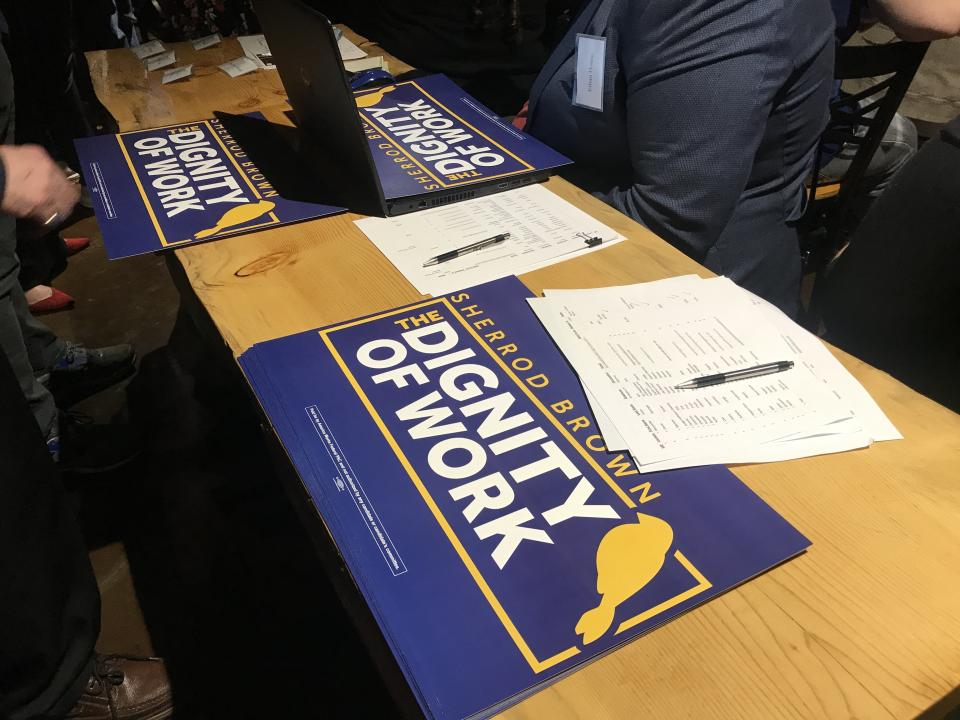
But since 2016, that perception appears to have changed.
Some of the story is familiar. The 2008 Wall Street crash; “too big to fail”; the long, sluggish recovery; the deep income inequality that only deepened in the process. Then Trump came along with his divisive “America First” rhetoric and performed better with union households than any Republican presidential nominee since Ronald Reagan, flipping just enough votes in the deindustrializing “blue wall” states of Michigan, Wisconsin and Pennsylvania to win the Electoral College. Out went corporatist, Hillary Clinton-style caution; in came “bold” “progressive” “resistance.”
Suddenly unions seemed cool again: “one more item [on] the list of retro things young Americans are rediscovering,” according to Mother Jones. In 2017, union membership actually increased for the first time in decades, and more than three quarters of those new members were under the age of 35. At the same time, Pew Research found that 75 percent of 18- to 29-year-olds (including 55 percent of young Republicans) view unions favorably — by far the highest proportion of any age group.
The reason, D. Taylor told me in Nevada, is simple self-interest.
“I have two younger daughters, 24 and 30,” he said. “When I talked to my daughters even a few years ago — they know the work I do — they’d go, “Oh Dad, we’re more into social justice.’ Not anymore. Now they see they can’t get stable, well-paying jobs. So they go, ‘OK, I don’t know a lot about unions, but I know the system right now is not working.’”
The ripple effects of this small but significant comeback have started to spread. Over the last year, teachers have gone on strike in Arizona, Colorado, Los Angeles, North Carolina, Oklahoma and West Virginia. In November, Missouri voters overwhelmingly defeated a Republican right-to-work measure. And 2018 was a “banner year” for organizing and bargaining in newsrooms nationwide.
Could the 2020 election be next? Brown, for one, is betting on it.

If the senator decides to run, and his staff seems to assume he will, his larger campaign will probably look and sound a lot like his early visit to Nevada.
Of course, Brown would hardly be the only populist on the trail. Bernie Sanders is back, and he will continue to excoriate “the millionaires and billionaires.” Elizabeth Warren, who passed on a presidential bid in 2016, is running as well, and she’s still explaining how she would “unrig” the system. The rest of the Democratic field is sounding similar notes.
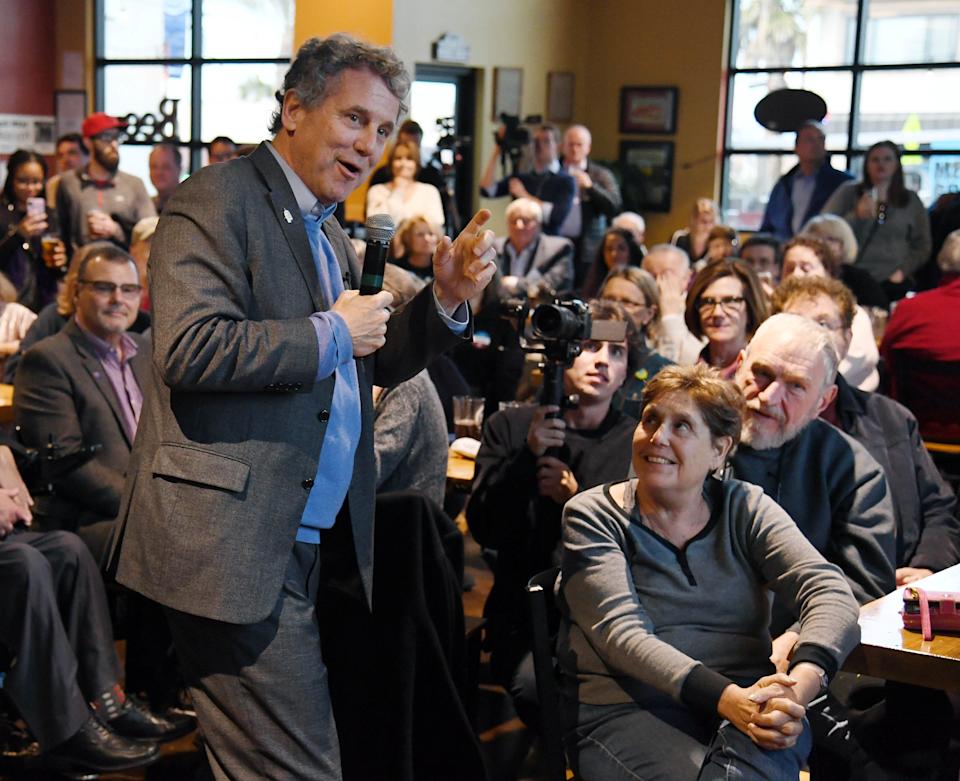
But in Las Vegas, Brown demonstrated several ways he would distinguish himself. The first is a matter of perspective. Sanders, Warren and their ilk tend to view the world through an anti-Wall Street lens. Brown sees everything from a pro-worker perspective. To the casual listener, Sanders and Warren can sound like they’re bashing billionaires or bankers because they’re billionaires or bankers — a message that might resonate in liberal enclaves like Vermont or Massachusetts but doesn’t play as well in middle America. In contrast, Brown is always careful to remind voters that the real problem isn’t wealth, per se — it’s that workers “are no longer sharing in the wealth they help create.”
This positive rather than negative emphasis — this idea that he’s boosting labor, not belittling capitalism — colors nearly everything Brown says.
It’s there in the way he talks about his proposals, as he did during a “Views and Brews” event with local Democrats at Lovelady Brewing in Henderson, a Vegas suburb. As a veteran senator, Brown has no shortage of legislative ideas, most of which are designed to strengthen key labor standards to reflect an economy that increasingly relies on alternative work arrangements (temps, subcontractors, freelancers and such). Expand collective bargaining rights. Ensure that alternative workers get benefits too. Crack down on employers that force people to work off the clock, refuse to pay the minimum wage, deny overtime pay, steal tips or knowingly misclassify workers to avoid paying fair wages.
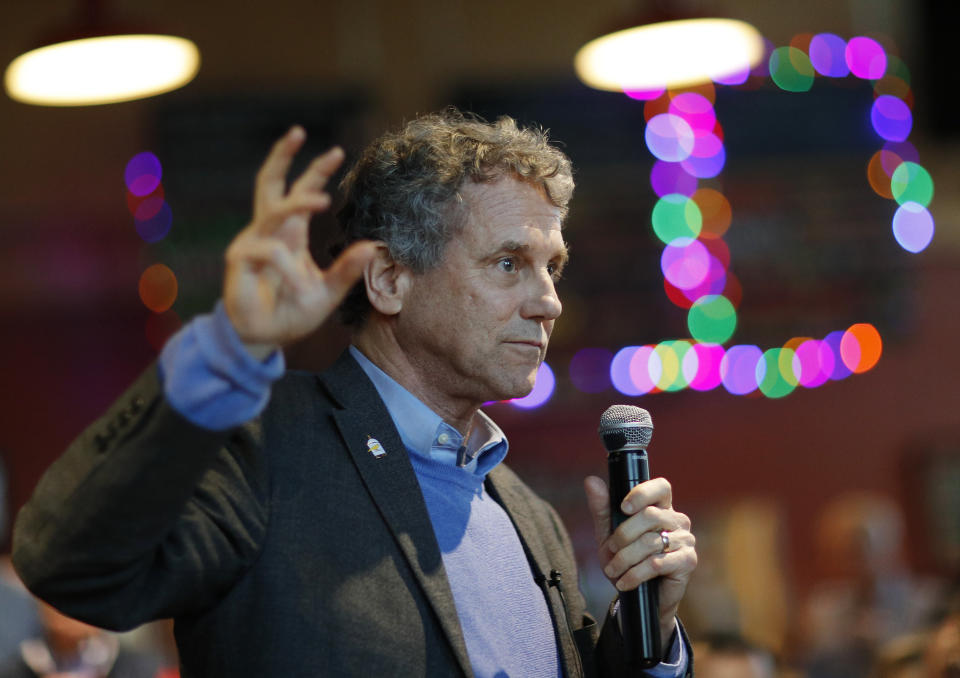
But perhaps the most pointed example of Brown’s pro-worker approach is tax policy. For years Brown has pushed for what he calls the Patriot Employer Tax Credit and the Corporate Freeloader Fee: a “carrot and stick” approach to companies that slash labor costs to pad their profits.
“The first bill basically says that if you pay a decent wage, provide decent benefits and you do your production in the United States, you get a lower tax rate,” Brown explained in Henderson. “But the other bill says when a big company that has executives making millions of dollars a year pays workers $8, $10, $12 an hour, and as a result those workers are eligible for Section 8 housing, the Earned Income Tax Credit, food stamps and Medicaid — that those companies pay a freeloader fee to reimburse taxpayers for subsidizing their workers. That’s the debate we should be having.”
Brown’s pro-worker bias is also apparent in the way he is beginning to think about the presidency itself. Near the end of the Culinary Workers town hall, Artie Blanco, a labor activist and Democratic superdelegate, lobbed a question from the back of the room. Democrats always pay lip service to labor, she said. Why should we think your administration would be any different?
“As I’ve done this Dignity of Work tour, I’ve heard from people like you who have pushed back on what we do,” Brown said. “And you’re right: Democratic presidents never do enough. Sure, they put really good, progressive, pro-labor folks in the Department of Labor. But you’ve got to think about the whole government. You’ve got to think of people at the Department of Homeland Security, the Department of the Interior, the Department of Agriculture —”
“Right!” Blanco shouted.
“They don’t have to be union activists,” Brown continued. “They could be. But they need to be people who think about workers. Whenever Homeland Security makes a decision, whenever the Department of Agriculture makes a decision, they think, ‘What does this mean to workers?’”
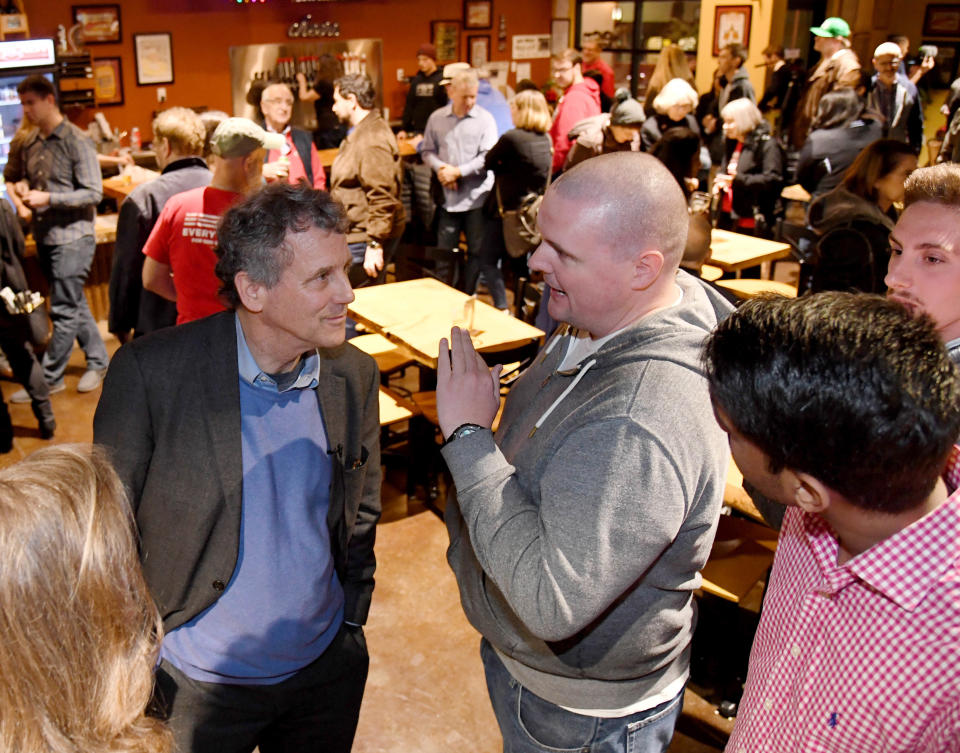
At times, the monomania of Brown’s “dignity of work” mindset threatens to expose how much less energy he devotes to other subjects. In Henderson, for instance, one Democrat asked a “foreign policy question” about Trump’s “misguided” approach to Israel and Iran. “How do you get respect back around the world?” he wondered. Brown briefly mentioned something about “consulting allies,” then reflexively pivoted to trade, telling a favorite stump-speech tale about the time he drove from Texas to Mexico to visit a new, post-NAFTA auto plant — and noticed there was no parking lot because, unlike in Cleveland, “the workers in Mexico couldn’t afford to buy the cars they made.”
“I want to see us engage in trade talks, bilaterally or multilaterally, to lift all workers,” Brown concluded, saying that his story “illuminates how we need to look at the world around us” — even though it didn’t have anything to do with the question he was asked.
Yet in the end, this kind of message discipline could prove to be a plus — particularly in a crowded field competing for attention from a distractible media and a distracted electorate. Brown knows his brand, and he knows how to market it.
Identity and ideology would likely be bigger hurdles. As a straight white male who will turn 68 the week of the 2020 election, Brown is not the sort of trailblazing candidate that many Democrats want to lead their diverse party. And though he would be “one of two people [in the primary] who voted against the Iraq War, one of two people who voted against NAFTA, the only person who has a long-term F-rating from the NRA” and one of the few who’ve “been pushing for marriage equality for 20 years,” as he likes to say on the stump, Brown has refused to join colleagues — often those with less liberal records — in endorsing this cycle’s biggest, boldest ideas: “Medicare for all,” the Green New Deal, a federal jobs guarantee and on so on.
“It’s easy to say we should have Medicare for all, but I just don’t know how you get it through Congress,” Brown told a young woman at his final Las Vegas event, a living-room Q&A with voters of color hosted by Make It Work Nevada. “How do you tell people who have insurance they’re happy with, ‘We’re going to cancel your insurance and put you in this Medicare plan?’”
“I know the popular thing to say is, ‘Let’s guarantee a job for everybody,’” Brown responded when asked in Henderson whether he would support a federal jobs guarantee. “But I don’t know how you do a guaranteed job.”

Brown explains his reticence in perfectly rational terms. “Voters increasingly see that Trump lied when he made promises,” he told me. “I'm not judging other Democrats, but I don't want to make promises that I think are so, so hard to keep. The things I talk about, we can do.”
Yet the mood of the Democratic base is probably more aspirational than rational right now — and the ultimate benefit of Brown’s pro-union approach, were he to run, is that it could help him bridge such gaps.

When it comes to identity, the assumption is that Brown would fall squarely on the side of the internal Democratic debate that says the party should focus on winning back white, Rust Belt Obama-Trump voters rather than turning out younger minority nonvoters in Sun Belt states like Georgia and Arizona. But while Brown does like to pledge that he “will beat Donald Trump in my state, where they know me best,” he actually doesn’t buy the notion that Democrats have to choose one path or the other — as long as they emphasize labor itself, which transcends such divides.
“You'll never hear me say white working-class voters, because I’m talking to voters of both genders, all races, all ages and all incomes,” he told me after the Culinary Workers event. “One of the great things about a trade union is its ability, more often than not, to look beyond race and gender. It’s about better wages and better benefits for everyone. That’s why it's called the union movement.” Brown looked around the room. “And this union is about as good an example as you can get.”
I looked around too. There were some white faces in the crowd. But there were as many, if not more, Latino faces, black faces and Asian-American faces. Local 226, which represents workers in casinos, hotels, bars and restaurants, has an especially diverse membership: 55 percent women, 54 percent Latino, 15 percent Asian, 10 percent black (and only 19 percent white). But it’s not alone. While the popular image of a union worker is a white guy on a midwestern manufacturing line, the reality is quite different: As of 2016, about two-thirds of union-covered workers age 18 to 64 were women and/or people of color, according to the Economic Policy Institute, and nonwhite workers in that category outnumbered white workers nearly 3 to 1.

It’s possible to imagine an electoral scenario in the not-too-distant future that proves Brown’s point about the crossover appeal of his Labor Democrat pitch. Over the last decade, the Culinary Union has helped transform Nevada into a reliable Democratic redoubt, so as Rusty McAllister, executive secretary treasurer of the Nevada State AFL-CIO, put it before Brown spoke, “They’re all coming — and there’s not one candidate who can win here unless we help them. They have to come through us.” If D. Taylor & Co. choose to endorse and mobilize on behalf of “the most pro-union candidate in this race,” Brown could wind up winning the Nevada caucuses — even with minorities, women and minority women in the race.
As for ideology, being a so-called Labor Democrat could help with that too. In previous elections, Brown’s counteroffers to liberals — Medicare at 55; adding a public option to Obamacare; doubling the Earned Income Tax Credit — would have been tarred as “socialism” by conservatives and considered unpalatable among moderates. Now, in a 2020 field that’s flirting with actual democratic socialism, Brown’s (still very progressive) plans seem more pragmatic. At the same time, his career-long commitment to labor — the cornerstone of modern leftism in America — could serve to persuade wary progressives that he’s not some sort of purple-state triangulator.
How Brown will fare in a national campaign, though, remains to be seen. On TV, he can come across as somewhat dour and disheveled; a recent Quinnipiac poll showed that 77 percent of Democrats don’t know enough about him to form an opinion, positive or negative. Yet in person Brown is a surprisingly spry and sunny retail politician, peppering both voters and reporters with personal questions — he always asks for, and usually remembers, both first and last names — and staying long after events to sign posters and pose for selfies.

Can Brown compete in an age when Trumpian brashness and bombast have increasingly become the norm? At the brewpub in Henderson, Connie Shultz started with a story about how her husband once swayed a skeptic.
“My dad was a utility worker for 36 years, for Utility Workers of America, Local, 270,” she said. “I wanted him to meet this man I was going to marry. And he said, ‘No, no, I don’t have to do that.’ … I knew what was going on. He thought a member of Congress — ’cause Sherrod was already a member of the House — was going to think he was too good for him. Worse, my dad thought Sherrod was too good for him.”
A few weeks before the wedding, Schultz’s father finally agreed to lunch. “My dad had taken a buyout recently from the plant in Ashtabula, Ohio, on the shore of Lake Erie,” Shultz continued. “So one of the first things I hear Sherrod say to him was, “So Chuck, I hear you took the buyout.” And dad says, “Yeah… “ And Sherrod goes, ‘How’s your pension? How are the union benefits? Are you still active in the union?’ An hour and a half later, my dad’s girlfriend and I had gotten to know each other very well.”
The crowd laughed. That whole time, Schultz explained, “Sherrod and my dad were talking about what it meant to be a union member. I learned more about my dad’s job that day than he had ever told me. And at the end, we were walking out to the car, and my dad grabbed my sleeve and he said, ‘Hey — he’s us in a tie.’”
By now, Brown has convinced plenty of Chuck Schultzes that he’s them in a tie. His challenge as a candidate will be to make the same case to the rest of the party — and convince them that’s the kind of president the country needs.
_____
Read more from Yahoo News:



